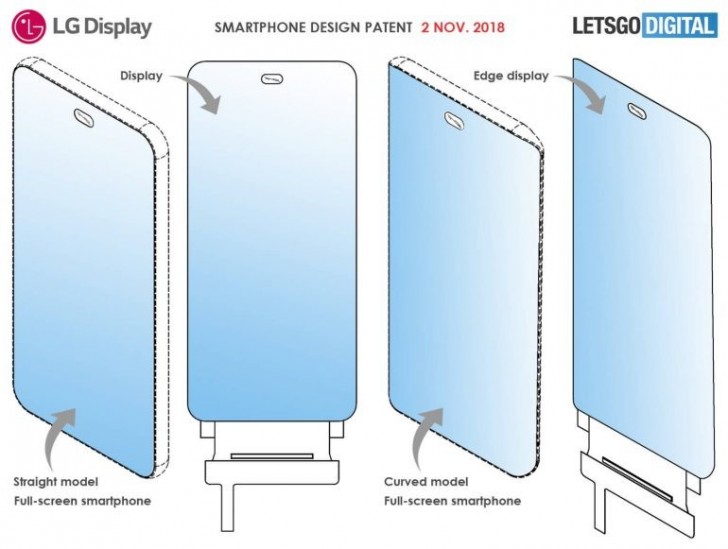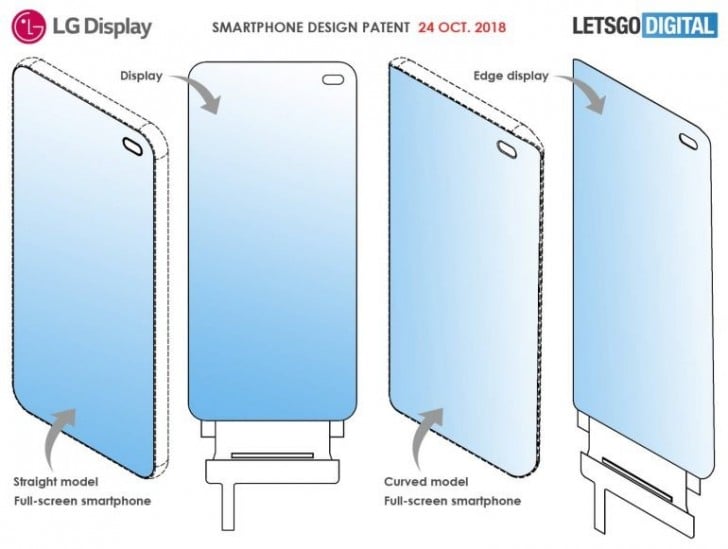Smartphone manufacturers are in a competition to offer a device with minimal bezels or no bezels at all. In a pursuit of that goal, the companies started embracing notched display, which enables manufacturers to offer higher screen-to-body ratio and house the front-facing camera and other sensors inside the notch.
After the trend of offering display with rectangular notch, waterdrop or dewdrop notch, smartphone manufacturers have now started offering devices with slide-out mechanism, where the camera sensors are housed on the slider.

Recently, we came across a new patent from Samsung which revealed that the South Korean giant might be working on a full-screen smartphone with an in-display front-facing camera. Now, a recent patent from LG shows that it is also working on a similar phone design which eliminates the need of notch and bezels.
LG has filed the patent in South Korea and showcases two different design approaches — curved model with full-screen design that has slanting edges and other one called straight model which has the straight screen with rounded edges.

However, the concept seems similar to what we’ve already seen where an oval-shaped cutout houses the front-facing camera module with either one or two camera sensors, along with other sensors. Further, the patent shows that the module can be placed in three locations — top-middle, upper-left corner, and upper-right corner on the front panel.
With such designs, the ultimate aim of the company is to offer nearly 100 percent viewing area with virtually no bezels. It’s good to see LG is still involved in making innovative smartphone products given that the company’s mobile division is struggling.
Read More: Microsoft foldable Surface phone patent hints at single flexible screen rather than different panels
While the patent suggests a full-screen smartphone with in-display front-facing camera from LG, this does not mean that the patent will actually materialise into a commercial device. Even though the company actually makes such phone, we’ll have to wait a few years before we get our hands on such devices.
(Source)






